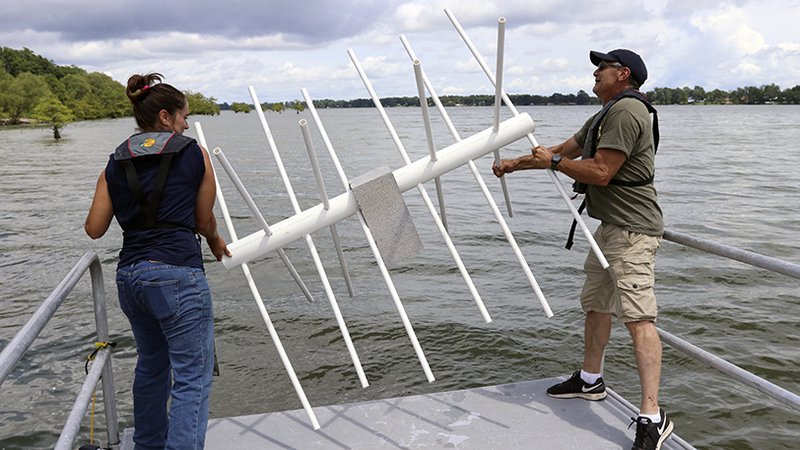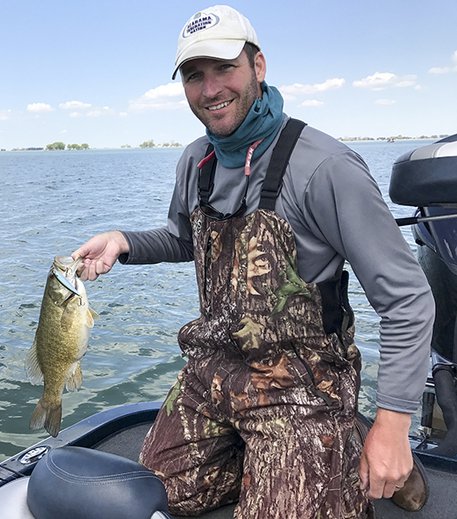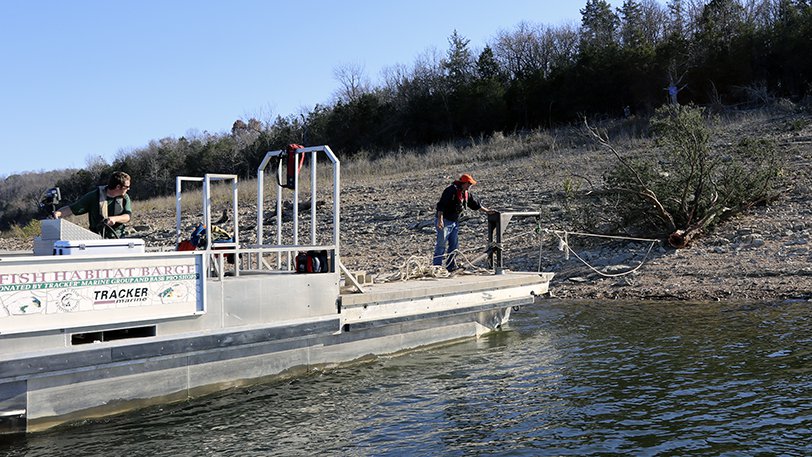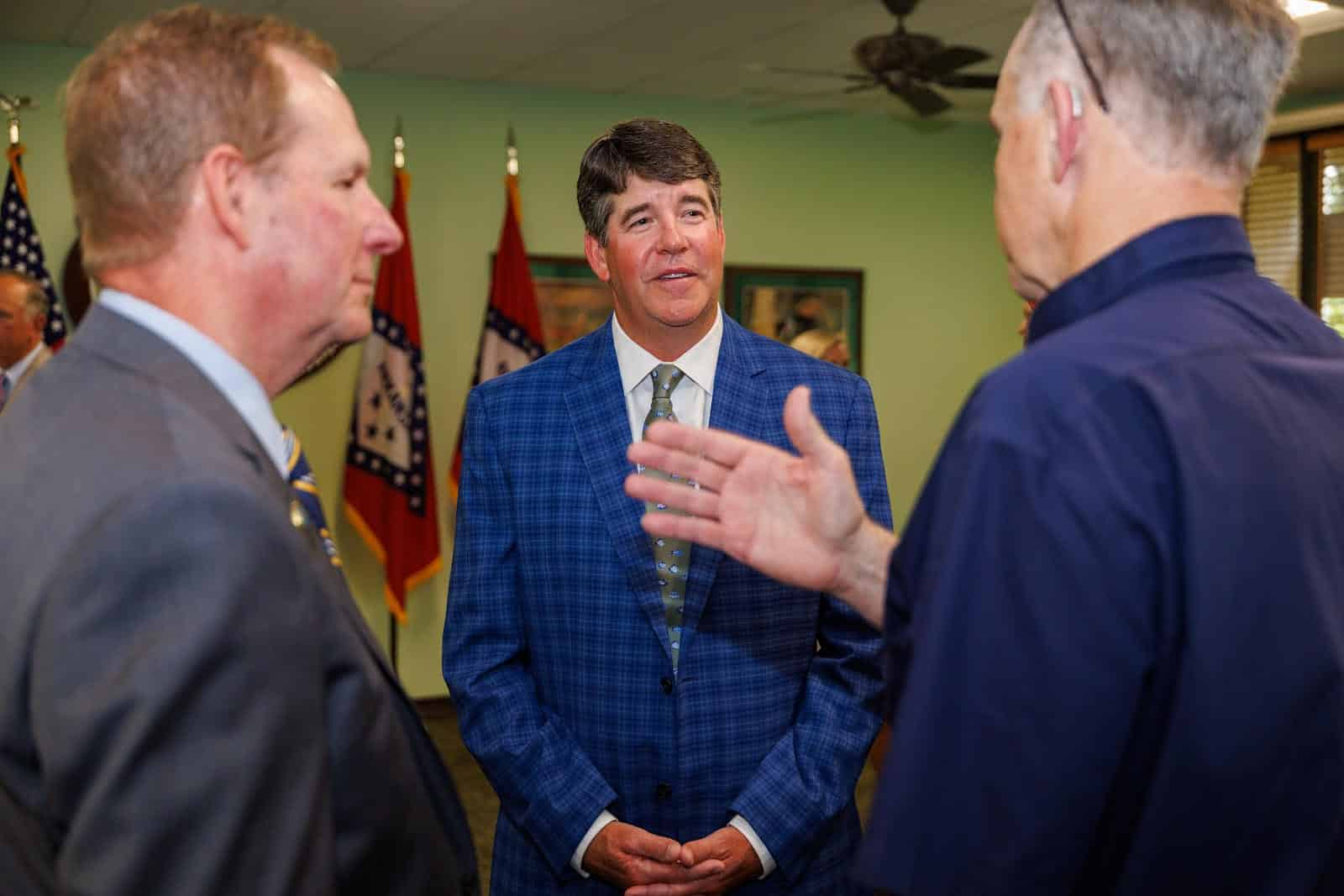Find fish attractors across the state at AGFC.com
ON 02-28-2018

Feb. 28, 2018
Randy Zellers
Assistant Chief of Communications
LITTLE ROCK – Anglers looking for a new favorite fishing location can find their way to a good catch with downloadable fish attractor locations at the Arkansas Game and Fish Commission’s website, www.agfc.com/fishattractors. Biologists and information professionals have worked together to list all known fish attractor locations placed by the AGFC in the last decade.
Thousands of fish attractors are loaded into the AGFC’s databases, but anglers sometimes have a hard time entering locations to their GPS units. With some lakes having hundreds of attractors to try, hand-entering coordinates can take hours. The AGFC’s Geographic Information Systems Division built special downloadable files in formats for the most popular brands of fishfinders and GPS units. One download will plot every attractor in a given lake.
Anglers also may pick and choose individual fish attractors to download using the AGFC’s interactive map at http://gis.agfc.com, but the process can be much more time-consuming.
“Anglers can visit the mapper on a desktop computer and load the coordinates individually or download their own GPX file,” said Paige Lott, Geographic Information Systems analyst for the AGFC. “But you would still need to convert the data to match your unit, so we made it easier by offering the downloadable lists.”
Many popular sportfish, such as bass, crappie, catfish and bream, use complex cover to hide in and ambush prey. Anglers have been sweetening their spots with the occasional treetop or brush pile long before Nick Creme invented the soft-plastic worm. Some studies even indicate the extra cover may have minor biological benefits.
Jason Olive, assistant chief of fisheries for the AGFC, says many studies prove lakes can benefit from complex cover, but at least 20 percent coverage is required to see a noticeable impact.
“However, in research I did at Mississippi State for my master’s project, we had ponds with Christmas trees, and nine months after stocking, largemouth fingerlings in ponds with Christmas trees averaged one inch longer than those in the pond without Christmas trees,” Olive said. “We measured every other factor – productivity, insects, forage – everything else was exactly the same.”
Olive speculates that the bass in the pond with complex cover were able to ambush prey easier, resulting in less energy loss, which would have led to the faster growth rate.
From a biological standpoint, Olive says aquatic vegetation always will have more impact than adding PVC or woody cover.“Native vegetation is the best,” Olive said. “Everyone that fishes Dardanelle or the Arkansas River knows that when you get some of those low-flow years some of that coontail comes up and that’s when fishing gets really good for a year or two after that.”
Biology aside, the AGFC’s main goal with fish attractors is to increase anglers’ odds of catching fish.
“In large lakes like Bull Shoals, we’re never going to reach 20 percent coverage,” Olive said. “But at the end of the day, our goal is to help anglers catch more fish. Whether that means increasing numbers of fish, or making the fish easier to catch, fish attractors give anglers and fish a place to connect.”
The process of placing fish attractors is more than just pitching out some cover and hoping for the best. Biologists work with local anglers to find likely hotspots or areas that meet criteria to make attractors most likely to hold fish.“Most of our biologists are avid fishermen, so they know some of the points, creek turns and other features that fish and anglers frequent,” Olive said. “But even then, as an angler myself, I know some attractors are just more productive than others and you’ll never know which are the best until after they’re sunk.”
Olive encourages any angler across the state to check out the list of lakes with known fish attractors, even if they haven’t heard of any large-scale habitat projects on the lake recently. Regional biologists often are able to come up with small brush piles, pallet trees and other types of fish attractors through the course of the year, but never enough at once to publicize a large effort.
“Those smaller efforts can add up over time,” Olive said. “And they’re always adding more.”

Recent News

Arkansas Wildlife Weekly Fishing Report
Jul. 10, 2025

Lonoke aquaculturist named to AGFC
Jul. 10, 2025
Subscribe to Our Weekly Newsletter E-mails
Don’t miss another issue. Sign up now to receive the AGFC Wildlife Weekly Newsletter in your mailbox every Wednesday afternoon (Waterfowl Reports are published weekly during waterfowl season and periodically outside the season). Fishing Reports arrive on Thursdays. Fill in the following fields and hit submit. Thanks, and welcome!
